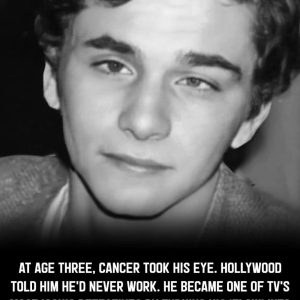Matthew Lee Johnson, a 49-year-old Texas man, was executed on Tuesday evening at the Huntsville state penitentiary for the brutal killing of 76-year-old Nancy Harris during a 2012 robbery at a Garland convenience store. Harris, a well-loved great-grandmother and longtime clerk, was doused in lighter fluid and set on fire by Johnson, suffering catastrophic burns that led to her death several days later. Johnson’s execution marked the continuation of a series of scheduled capital punishments occurring across the United States within the same week, including another execution planned for the same day in Indiana for Benjamin Ritchie, convicted of murdering a police officer in 2000. The broader context highlighted an unusually active period for executions nationwide, with two others carried out in Florida and Tennessee around the same period. Johnson’s case stood out not only for the cruelty of the crime but also because it took place exactly thirteen years after the assault on Harris, a coincidence noted in legal filings and public reporting.The crime itself left a lasting mark on the Garland community. On May 20, 2012, Harris had just begun her Sunday shift at the store near her home when Johnson entered, demanded cash, and suddenly covered her in lighter fluid before setting her alight. Surveillance cameras captured significant portions of the attack, providing investigators with immediate evidence. Despite her devastating injuries—second- and third-degree burns across her head, face, neck, shoulders, arms, and leg—Harris managed to flee the store and describe her attacker to first responders before succumbing to the injuries days later. A police officer who arrived on the scene used a fire extinguisher to put out the flames still consuming her body. Johnson, who had calmly walked away from the store with stolen cash, was arrested within an hour of the attack. During the trial the following year, he openly admitted responsibility, calling himself “the lowest scum of the earth” and expressing remorse for taking the life of an innocent woman.Johnson’s legal team presented a complex personal background during the 2013 trial, attempting to contextualize his actions without excusing them. They emphasized his long-standing addiction to crack cocaine and described a pattern of substance abuse that had significantly impaired his judgment on the day of the crime; Johnson himself claimed he had consumed approximately $100 worth of crack and was unaware of his actions. His attorneys also noted that Johnson had experienced sexual abuse during his childhood, factors they believed shaped his psychological and behavioral vulnerabilities. Despite these mitigating arguments, Johnson’s admission of guilt, the graphic nature of the crime, and the suffering inflicted on Harris contributed to a swift death sentence. During sentencing, jurors were required to determine whether Johnson represented a future danger to society, an assessment integral to the imposition of capital punishment in Texas. His lawyers later argued that this evaluation had been conducted improperly, forming a fundamental basis of his early appeals.Over the next decade, Johnson’s attorneys pursued multiple appeals aimed at overturning or delaying the execution, but courts consistently rejected their claims. The Texas Board of Pardons and Paroles declined his request for clemency, refusing to reduce the death sentence to a lesser penalty. More recent appeals challenged the legality of the scheduled execution date itself, contending that procedural irregularities invalidated the setting of his death warrant. These efforts were similarly dismissed by appellate courts. David Dow, one of Johnson’s primary attorneys, announced that he would not seek further emergency intervention from the U.S. Supreme Court, reflecting a recognition that the legal avenues had effectively closed. In a filing last week, the Texas Attorney General’s Office argued that Johnson’s numerous appeals amounted to attempts to indefinitely delay a lawful sentence and insisted that justice “should no longer be postponed” thirteen years after the murder.Harris’s family played an important role throughout the trial and sentencing, providing emotional testimony about her life, character, and the profound loss they suffered. She had been a devoted mother to four sons, a grandmother to eleven grandchildren, and a great-grandmother to seven. Community members remembered her as a gentle, hardworking woman who lived only a short distance from the store where she worked for more than a decade. Witness statements described her dedication to her job and her deep connection to the neighborhood she served. During court proceedings, medical professionals detailed the severe pain and suffering Harris endured in the days following the attack, reinforcing the brutality of Johnson’s actions. The personal narratives offered by Harris’s family and the clinical descriptions provided by doctors and nurses combined to paint a vivid picture of the human cost of the crime, influencing both the jury’s verdict and the public response.Johnson’s execution became part of broader national conversations about the frequency and administration of the death penalty in the United States. Texas, historically the nation’s most active state in carrying out executions, marked Johnson as the fourth person it had executed in the year so far. If both scheduled executions—Johnson’s in Texas and Ritchie’s in Indiana—were completed on Tuesday, the total number of executions nationwide would rise to eighteen for the year. Advocates for capital punishment pointed to Johnson’s undisputed guilt, the heinousness of the crime, and the long delay between conviction and execution as justification for enforcing the sentence. Opponents highlighted concerns about the fairness of future-danger assessments, the impact of Johnson’s addiction, and the broader ethical questions surrounding capital punishment. Regardless of these debates, Johnson’s execution ultimately concluded a case marked by overwhelming evidence, deeply affected families, and a protracted legal process spanning more than a decade.
Related Posts

I raised my twin sons alone after their mother left. Seventeen years later, she returned, making an outrageous request that stunned me and tested the family bonds we had built over nearly two decades of love and perseverance.
Seventeen years after abandoning their newborn twin sons, Vanessa returned just minutes before their high school graduation, claiming the title of “Mom.” Her sudden reappearance stirred memories…

This plant supports both brain and digestive health. Rich in antioxidants and essential nutrients, it may improve memory, focus, and cognitive function while also aiding digestion, soothing the gut, and promoting overall well-being when incorporated into a balanced diet.
Celery often carries a reputation that teeters between miracle food and humble vegetable. Touted by some as a superfood capable of promoting detoxification, weight loss, and instant…

Tragically, this iconic star forgot the role that defined his career before his passing. Friends and colleagues reflect on his remarkable performances, celebrating his enduring legacy in film despite the heartbreaking memory loss that marked his final days.
Few TV detectives have left a mark quite like the rumpled, raincoat-wearing sleuth “Columbo.” For decades, audiences watched Peter Falk’s iconic character shuffle into crime scenes with…

BREAKING: A massive fire has damaged or destroyed an estimated 300 homes. Emergency services are responding, and residents are being evacuated. Authorities are assessing the situation, while communities rally to support those affected by the widespread destruction.
Devastating Fire Hits Pamplona Alta, Lima San Juan de Miraflores, Lima — A massive fire tore through the Pamplona Alta neighborhood on Saturday afternoon, consuming a densely…

After discovering my wife of six years was cheating, I stayed silent, hiding my knowledge. She never expected the carefully planned surprise I had prepared, a move that would reveal my awareness and completely change the course of our relationship.
The cracks in the marriage appeared quietly at first. The narrator, a 32-year-old father, noticed subtle signs: missed school pickups, unusual errands, and inconsistencies in his wife…

She appeared innocent as a child, but over time, her life took a dark turn. Growing up, she became one of the most notorious female killers, shocking communities with her crimes and leaving a chilling legacy behind.
Aileen Wuornos’s life began under a cloud of neglect, instability, and trauma that would shape her entire existence. Born in 1956 in a small Michigan town, her…